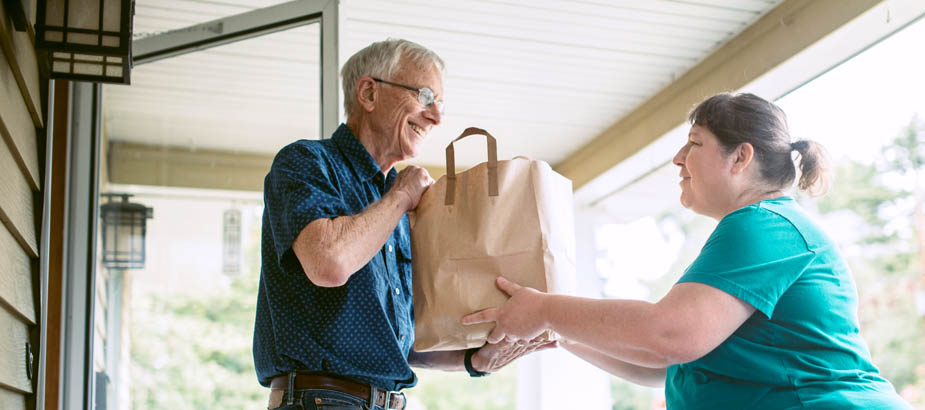In the nearly two years since the Covid-19 pandemic hit, the food and grocery industry has faced new (or more intense) challenges. Inefficiencies, inflation and supply chain bottlenecks put an especially tight squeeze on the industry as customers placed a higher volume of online orders – and then had to wait hours (or days) for delivery.
In 2021, the online food and grocery market ballooned to $97.7 billion, with more than 70% of U.S. households placing at least one online grocery order during the year. And with customers becoming consumed with pandemic concerns, grocery delivery options became a deciding factor for many. According to a study by technology and consulting firm Capgemini, 40% of consumers said delivery is now a must-have in the food and grocery space.
This trend makes last mile logistics a crucial concern for this industry.
What is Last Mile Logistics for Food and Grocery?
As in other retail sectors, the last mile of the food supply chain refers to the final journey of groceries from the store or warehouse to the end customer. This can follow a few different models, like buy online/pick up in store (BOPIS), curbside delivery or home delivery.
The primary benefit to customers is the convenience to order from home instead of having to travel to the store. During the Covid-19 pandemic, another benefit popped up: the ability to avoid crowds and follow social distancing guidelines.
Grocery Buying Trends
Trained partly by pandemic necessities and partly by large retailers like Amazon Fresh, consumers now expect omnichannel options for receiving their groceries. Market research provider Appinio found in their 2022 Online Grocery Report that 47% of Americans buy their groceries online at least some of the time. Of those, 13% shop mostly or exclusively online.
The report also found that 57% of consumers expect to order groceries online at least part of the time in the next two years, and 22% are planning to order most or all of their groceries online.
With these numbers, it’s clear that customers see big benefits in online grocery ordering and delivery. But what are the benefits of last mile logistics for grocery stores?
1st Benefit of Last Mile for Food & Grocery: Visibility
With transparent order processing and visibility into deliveries, many problems can be headed off before they impact customers. This is especially important for your customer satisfaction score — Appinio found that 67% of consumers want transparent order processing (including order tracking, convenient delivery times and delivery-slot notifications).
With a last mile logistics platform in place, food and grocery retailers can reroute deliveries as necessary to adapt to traffic and weather conditions, among other issues. It also centralizes tracking data for your last mile grocery delivery — from dispatch to the customer’s doorstep — so everyone is on the same page.
2nd Benefit of Last Mile for Food & Grocery: Better Exception Management
From traffic jams and major storms to courier issues (like vehicle breakdowns), lots of issues can pop up on the way to a customer’s door. And while customers may be understanding, their satisfaction depends on the speed of delivery and how you handle these exceptions.
With Control Tower visibility and tracking for both customers and your team, everyone can see where their shipment is (and its estimated ETA), cutting down on WISMO calls. The software helps spot trouble in real time and allows for dynamic rerouting and rescheduling without customer service calls.
Even better, the platform can pull in data to predict exceptions and solve them before customers even notice. This competitive advantage is huge — a last mile logistics platform gives you a lot more power to ensure a smooth last mile for food and grocery deliveries.
3rd Benefit of Last Mile for Food & Grocery: Delivery Automation
Manually processing a grocery order, finding courier capacity, and dispatching to meet delivery promises takes up a huge chunk of your team’s time. Last mile delivery software automates the process, freeing you up to focus on other business goals.
Another big benefit of automating the order and delivery process is that it allows you to scale much more easily. One of the pandemic effects felt by grocery stores was the added volume of online orders, leaving some struggling to meet capacity and delivery windows. With a last mile platform automating the process, team members can better adjust to demand.
And once the delivery leaves your store, the platform can optimize routes and give drivers key information (like packages per order and time to the next stop) to help make intelligent decisions about routes.
4th Benefit of Last Mile for Food & Grocery: Better Data
Grocery store supply chain management is much easier when you have all your data in one centralized place. Whether you want to see the number of deliveries by region, average distance from store, or on-time delivery numbers, your last mile logistics platform gives you the information you need.
Advanced features of last mile delivery platforms include role-based access control, so you can manage who on your team sees which data points.
With this historical data at your fingertips, you can make more informed supply chain decisions to drive revenue, optimize last mile workflow, achieve higher sales margins and, most of all, keep your customers happy.
Need help getting started with a last mile delivery solution for food and grocery? Contact our team to schedule a demo today.


